SRAM Red AXS vs Shimano Dura-Ace Di2
With the renewal of its top-of-the-line group Red AXS, SRAM once again puts itself on par with Shimano, who, with its Dura-Ace Di2, remains the benchmark, at least if we take into account the number of cycling teams that opt for one or the other. Both groups, cutting-edge cycling technology that ensures exquisite performance and the lightest weight possible. The choice between one or the other will ultimately depend on each individual's preferences. Here we show you the peculiarities of each one so you can decide which one best suits your tastes and needs.

Shimano and SRAM take road cycling groups to the highest level
Who do you love more, mom or dad? This is the same question we ask ourselves when choosing between Shimano Dura-Ace Di2 and SRAM Red AXS. If you are looking for us to tell you which is the best of the two groups, we will disappoint you. Despite what fans of one brand or the other may say, the reality is that both offer millimetric precision in shifting. The shifts are much faster than we may need in any situation, a criticism that was made of previous versions of SRAM Red. Both have pushed the weight of their components to the limit, another aspect in which the American group has improved.
Well fed
So let's go step by step and analyze what each group offers us. In both cases, we find 12 sprockets in their cassette and wireless operation to communicate the shifters and derailleurs. However, here are the first differences, as while the SRAM Red AXS is completely wireless with independent and interchangeable batteries in the shifter and derailleur, the Shimano Dura-Ace Di2 maintains a central battery located internally in the frame, which powers, in a wired way, the shifter and derailleur. Apart from that, for those who do not want to worry about more than one battery, Shimano offers the option of wiring the shifters as they have traditionally done.
RECOMENDADO

Some reasons to stay away from the road in winter
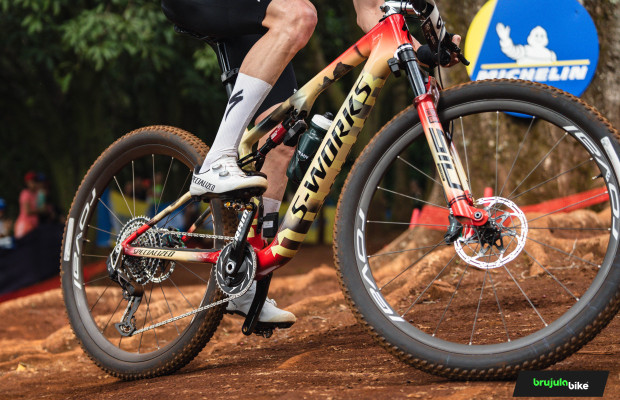
S-Works: what does it really mean and where does Specialized's most exclusive label come from?

The best apps for cycling and mountain biking

Black Friday 2025 cycling bargains: save on Garmin, POC, Maxxis and more

Black Friday Garmin 2025: the ultimate guide to choosing your GPS at the best price
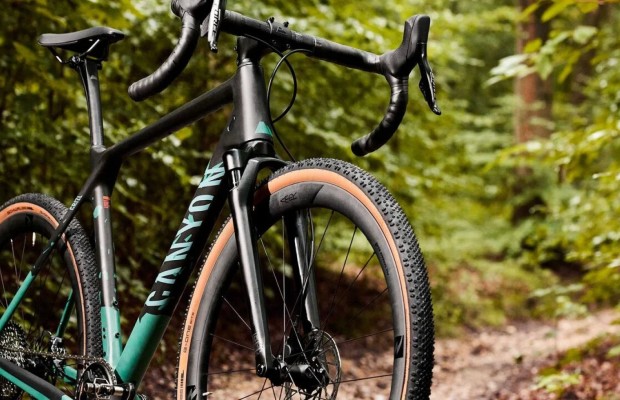
Do you need suspension on your gravel bike?
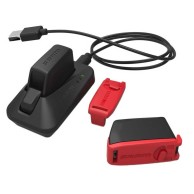
These batteries offer a similar duration in both brands and allow you to pedal for about 1,000 kilometers, slightly less for SRAM, always depending on temperature conditions or if our usual routes require more or less use of the shift. The fact that the Shimano Dura-Ace Di2 battery is internal has the disadvantage that it requires having a plug near the bike to be able to charge it through a magnetic connector located in the shifter.
On the other hand, SRAM batteries can be conveniently charged at home with their specific charger, and the ease of swapping them makes it possible, for example, if the shifter battery starts to run low, to put the derailleur battery in its place or even carry a spare battery in the jersey due to its small size.
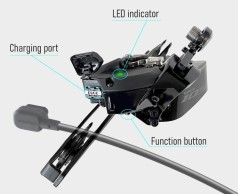
Regarding the shifters of both groups, small button batteries are used, with a duration of around 2 years. This can be a problem as they are not monitored as frequently as the shift batteries. Fortunately, both the specific application of each group and our cycle computer, if we connect the group to it, will notify us when the battery level starts to be low.
Combinations for all tastes
The point that most often tips the decision for one group or another is the choice of gear ratios, especially considering the classism that many road cyclists still maintain and that makes them reluctant to any innovation.
SRAM caused a disruption when it bet, in the previous generation of its Red AXS, on smaller chainrings that were combined with a cassette starting at the 10-tooth cog instead of the usual 11. However, they soon received criticism from professionals regarding the inefficiency of the 10-tooth cog or the large gear jump between this cog and the 11 that followed in the cassette. This led SRAM to eventually offer more chainring combinations, with chainrings that form a unit that attaches directly to the crank, integrating the power meter into its structure compared to the more traditional system of Shimano cranks with interchangeable chainrings.
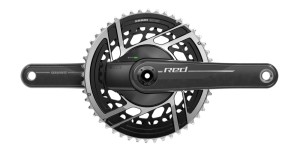
In SRAM, we find chainring combinations of 52/39, 54/41, 56/43, 50/37, 48/35, and 46/33, in addition to being a group specifically designed to also work with a single chainring as it is also designed for gravel and cyclocross use, offering a complete range of individual chainrings that cover everything from time trials to extreme gravel. On the other hand, Shimano maintains the most classic combinations of recent times, namely 52/36 and 50/34, while replacing the traditional 53/39 with a 54/40 to meet the demands of professionals who are pedaling at higher speeds.
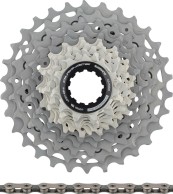
Meanwhile, in the cassettes, SRAM offers up to a 10-36 for its road shift version, allowing for a 10-44 if you opt for the XPLR shift oriented towards gravel. On the other hand, Shimano has an 11-34 option with a larger cog. In a component where we find another difference between the two groups, with Shimano maintaining the HG hub, practically a standard in the market, while SRAM opted for the XDR hub to stop having to pay user rights to Shimano in order to mount the 10-tooth cog. This is not a problem as practically all wheel brands have different types of hubs for their different models.
Maximum precision
The shifters and derailleurs of both groups are a technological marvel. Beyond aesthetics, the operation in both is impeccable although there are some peculiarities. In the case of Shimano Dura-Ace Di2, the rear derailleur is the main component of the system in which its control unit is housed, in addition to incorporating the battery charging port.

On the other hand, the SRAM Red AXS derailleur, designed to be used with a single chainring, has a damping system in the pulley cage to prevent chain movements. A system with a small hydraulic piston called Orbit that allows smooth movements so that the pulley cage has to move to adjust to the selected cog while directly preventing sudden movements caused by bumps.
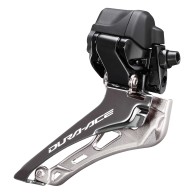
We also find differences in the derailleur, in terms of operation. While the Shimano Dura-Ace Di2 automatically trims to avoid chain rub when it is crossed, the SRAM Red AXS derailleur has a unique yaw movement in which the derailleur not only moves up and down but also makes a small rotation to align with the chain line.
Within your reach
One of the characteristic points that has set Shimano and SRAM apart over the years and the main argument for choosing between them has been the ergonomics of their shifters. However, in this latest generation of both groups, the curious phenomenon has occurred that SRAM shifters have reduced in size, one of the main demands of their users, while Shimano shifters have increased in size, making the differences between them minimal in terms of grip or brake lever operation.
The differences are found in how they act on the shift. While Shimano Dura-Ace maintains a traditional operation in which the left shifter is dedicated to changing chainrings, with two buttons that serve to shift up and down; and the right shifter operates the rear derailleur, also with two buttons to shift up and down.
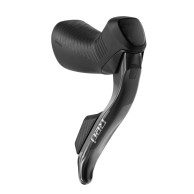
On the other hand, SRAM has an operation that reminds us of sequential car shifts. Each shifter has a single button that acts on the rear derailleur, shifting up with the left and down with the right. Changing chainrings is done by pressing both buttons at the same time, which may seem complicated if you have never used it before but is actually quite intuitive.
In any case, both groups can be configured from their respective apps, so we could have a Shimano group with an operation like that of SRAM since both apps allow us to configure the sequential operation mode in which the group automatically shifts chainrings while we simply shift up and down cogs. Both also have the mode in which we manually shift chainrings but the group automatically shifts up or down a couple of cogs to compensate.
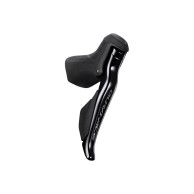
It is also possible to add additional shifters to the shifters to be able to shift from another area of the handlebar, although this is an option that is usually only used by triathletes and time trialists on their bikes in order to be able to shift from the aero bars or from the handlebar.
Also related to the shifters, it is worth mentioning that in both cases we can adjust the reach of the lever as well as the feel of the disc brake operation, brakes that, in both cases, offer an excellent dose of power and modulation capacity and, thanks to the design of their respective calipers, without heating problems on long descents where intensive use of them is required. The main difference between the two is the use of mineral oil in the case of the Japanese while the Americans remain faithful to DOT 5 brake fluid.
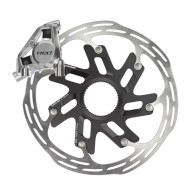
Regarding weight, specific figures cannot be given as the brands offer these data in a non-comparable way, however, it is worth noting the weight loss that the SRAM Red AXS has undergone, which, according to the brand itself, places it a few grams ahead of its competitor. The reality is that some components are heavier in one group and others in the other, balancing each other out and, as we said, offering a final result with minimal difference.
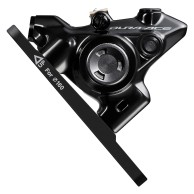
Just as the price difference is minimal, mind you, we are talking about the price at which both groups can currently be found on the market since, at the original catalog price, the Shimano Dura-Ace Di2 was noticeably more expensive than its competitor. Checking on the most popular shopping websites, we find the complete SRAM Red AXS for around €2,900 while the Shimano Dura-Ace Di2 has been seen for around €2,800, with the difference that the SRAM kit includes the Hammerhead Karoo cycle computer. As a curiosity, if you have a previous generation SRAM Red AXS, you can upgrade it with the shifters and disc brakes, the main upgrade as they are fully compatible with the derailleurs of the previous Red AXS.